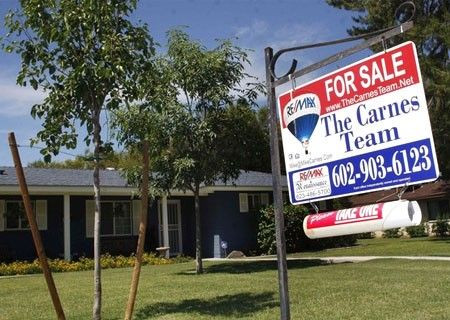Real Estate News: Home Prices Increase In First Quarter Despite Coronavirus Impact

Data released by the National Association of Realtors (NAR) on May 12 indicated that home prices in the first quarter of the year increased despite the impact of the coronavirus outbreak on the economy. The median single-family home price rose in 96% of U.S. metro markets in the first quarter of the year over the same time period in 2019.
The NAR said the national median existing single-family home price in the first quarter of the year was $274,600, a 7.7% jump over the first quarter of 2019. The following regions saw increases in the median single-family sales price over last year: Northeast (9.7%), Midwest (7.5%), South (7.5%), and West (7.5%).
Some U.S. cities saw double-digit jumps in price, such as Boise City, Idaho (18.1%), Eugene, Oregon (14.5%), and Colorado Springs, Colorado (14.4%).
"The first quarter price jumps mostly reflect conditions prior to the coronavirus outbreak and show the strength of the housing demand prior to the pandemic. Even now, due to very limited listings, home prices are showing no signs of buckling,” NAR Chief Economist Lawrence Yun said.
Low interest rates are one reason why demand for housing is so high, with Mortgage News Daily reporting Friday that the average rate on a 30-year fixed mortgage has fallen to 3.09%.
Some lenders are even offering mortgage rates of 3% or 2.75%-2.875%, a great deal for homebuyers. Mortgage rates are influenced by the Federal Reserve, with Chairman Jerome Powell lowering interest rates as a means of stimulating the economy amid the ongoing coronavirus pandemic.
At the same time, Yun has said the U.S. needs to increase the supply of affordable housing to meet demand.
“Supply is extremely limited, and there are simply not as many homes for sale to meet the demand among potential buyers,” Yun said. “More supply and more listings are needed to provide a faster recovery for the economy.”
In February, mortgage lender Freddie Mac said the U.S. would need 2.5 million additional housing units in order to keep up with a severe domestic housing shortage. The company said high housing prices have most negatively impacted the Millennial generation.
The coronavirus outbreak could be delaying the construction of new houses. The National Association of Home Builders (NAHB) has said nearly a third of home building material inputs come from China, with the virus disrupting the global supply chain.
“Low interest rates help support demand, and consumer confidence readings in the coming months will be key, but the virus does heighten some of the longer-term challenges on the supply side in terms of housing supply,” NAHB economist Robert Dietz said in April.
A U.S. economic recovery could also boost the housing market. The GDP decreased by 4.8% in the first quarter of the year, but some top economic officials have said the economy could bounce back later in the year.
© Copyright IBTimes 2025. All rights reserved.




















